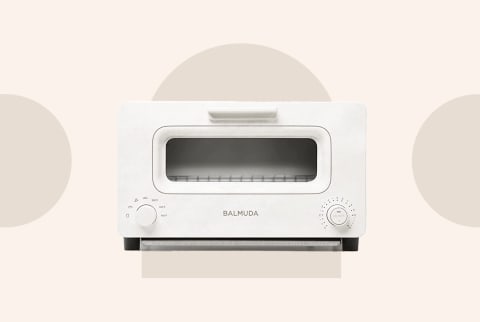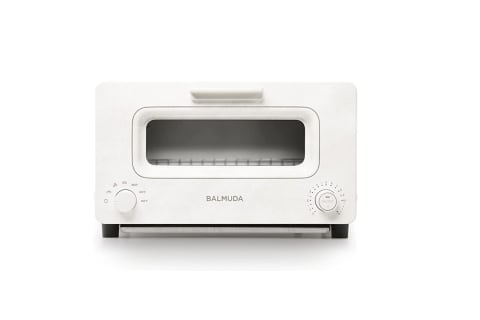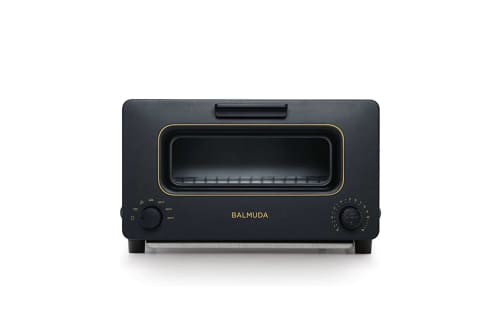For the most part, I figured my gas stove was safe to use, as long as I remembered to turn on my exhaust fan. Then a peer-reviewed study was published last week estimating that nearly 13% of childhood asthma cases could be linked to living with a gas stove. A light bulb went off, and I started to realize the impact a gas stove could have on my health. If I owned my apartment, I may have been tempted to make the swap to an electric stove. Instead, I decided to find clever ways to reduce how often I used my gas stove, which led me to rely heavily on another kitchen appliance: my Balmuda toaster oven. While you can’t see the steam in action on the food, you can see the toaster’s tiny window fogging up with excess moisture. More importantly, you can taste the difference. The steam technology results in a slice of warm bread with crusty edges and a fluffy center that tastes like it just came from a bakery (rather than a four-day-old loaf from the grocery store). An infographic is printed on top of the toaster oven to help guide you through the steaming process, with both water and time measurements available by food type. Following this guide is the easiest way to get the perfect cook every time, as it factors into the device’s precision temperature technology. This function controls every second of the heating process to ensure the food is thoroughly warmed and steamed before the browning, and eventually toasting, begins. At first I heavily relied on Balmuda’s instructions, thinking the appliance required the same precision as baking—but I soon realized there was a bit of flexibility before the food became inedible. As someone who’s prone to go with the flow in the kitchen, I was relieved that my imperfect process could still earn impressive results. After all, the $25 toaster gracing my countertops got the job done, and it only occasionally smelled like the leftover remnants of an everything bagel. It wasn’t until my roommate walked through the door carrying the Balmuda Toaster that I finally grasped the shortcomings of my old appliance. My very first impression of Balmuda was that it was good-looking, which is the last compliment I ever thought I’d give a toaster. The design meets the perfect midway between retro and modern with minimal dials, no screens, and a single window into the unit. Without context, it would have seemed like a Smeg appliance, a product focused on looks rather than innovation. But I soon realized the kitchen appliance served a greater purpose: It replaced my toaster and oven to make cooking delicious and nutritious meals so easy. When I wanted avocado toast, it could transform my frozen whole-grain loaf into a soft-but-still-toasted bed for my avocado. When I wanted roasted veggies, I could simply opt for the heat settings—350, 400, or 450 degrees Fahrenheit—to get the perfect roast. What’s more, the compact size takes way less time to heat up than my actual oven, so it’s far more efficient. In fact, my only real complaint about the Balmuda is that the timer on the bake settings caps out at 15 minutes, so I often have to return to the kitchen to reset it a second time to finish cooking certain foods (like root vegetables or frozen meals). However, I will note that the white exterior of my toaster oven does have a few scuffs from lugging it between apartments and placing different ceramic plates on top of the toaster (which is not recommended by the brand). If you’re at all concerned about wear and tear, I’d recommend opting for a darker colorway. Luckily, the brand offers a few different options to suit various tastes.





